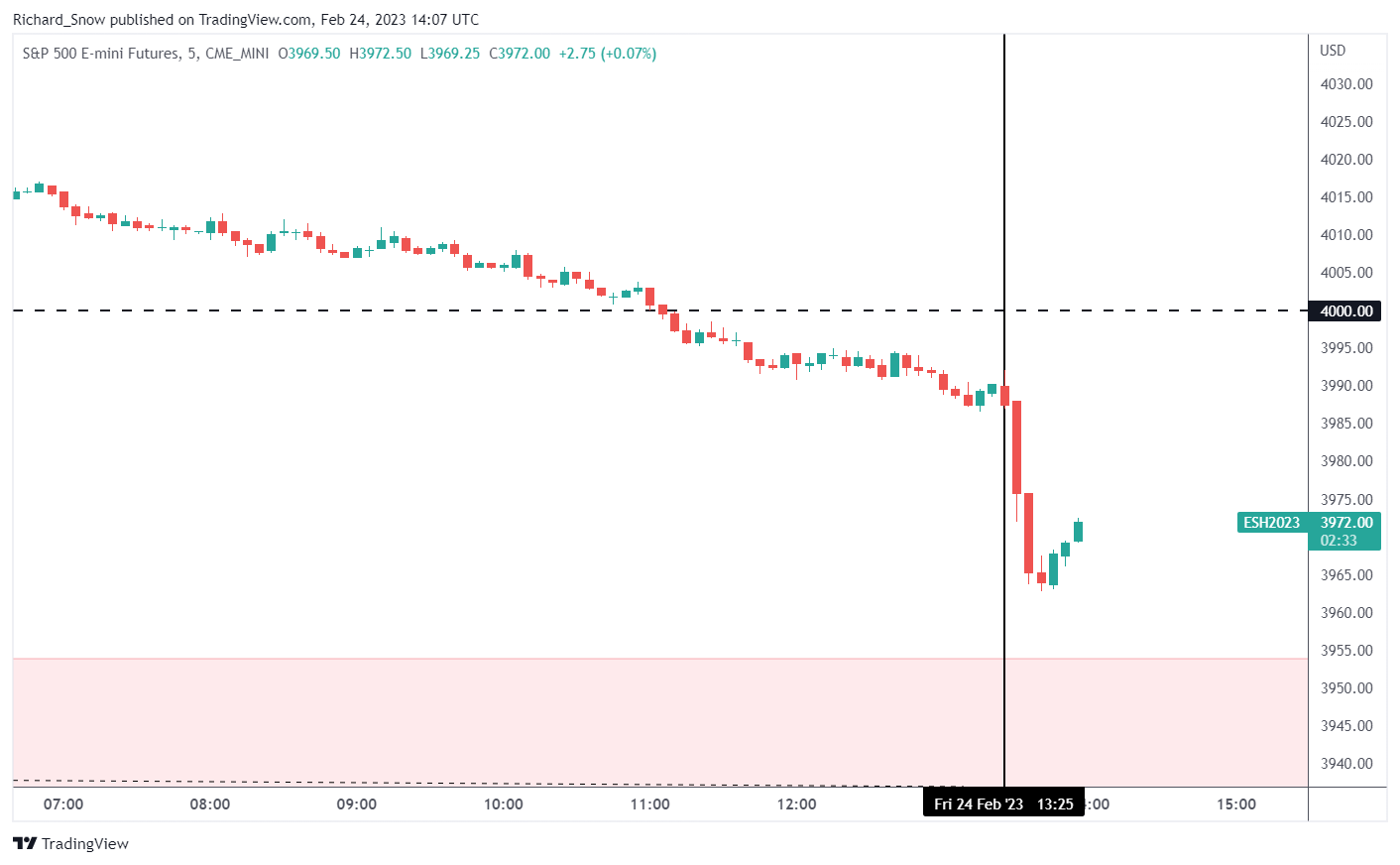Core PCE in the United States rises 4.7% vs. 4.3%. Wall Street’s main indexes fell on Friday, on track for their worst weekly performance of the year. As figures indicating greater consumer spending and inflation fueled concerns that the Federal Reserve will maintain its tough stance for much longer.
Core PCE pushes Wall Street down
All 3 indexes were on track for weekly losses of around 3%, with the blue-chip Dow on track for its biggest weekly loss in 5 months.
Following a strong Jan behavior. Stocks have withdrawn this month. As an array of economic figures has heightened concerns that the US central bank may have to keep rates higher for longer Due to signs of persistent inflation and a tenacious job market.
The personal consumption expenditures (PCE) price index, the Fed’s favored standard measure of inflation, rose 0.6 percent last month. After rising 0.2 percentage points in Dec., according to data released on Friday.
Core PCE data invites more to think
Market participants of Fed policy rate futures increased their bets that the central bank might very well raise interest rates at least another three times this year. With the peak rate is expected to be in the 5.25%-5.5 percentage-point spectrum by June.
The Bad Face OF Rising prices
While the market is more concerned with the CPI version of inflation. The Fed looks to the broader PCE measure as an indicator of price trends.
Inflation has been steadily declining, but a number of different inflation measures (CPI and PPI in specific) indicate a revival in price pressures, printing greater than anticipated. But, still sustaining the disinflationary pattern.
Today’s PCE print confirms the Fed’s signal that the struggle against inflation is not yet over and that the terminal rate of interest would seem to be 5.5 percent.
After a dismal December print, warmer weather and the largest increase in social security payments helped reinvigorate consumer spending in Jan.
Increased discretionary income seems to have led to a rise in the general cost of goods and services in the US economy. Something the Fed is still working hard to change.
USD Market Price Reaction
The dollar (DXY) soared in response to the stronger PCE print, as did Fed fund futures both US and yields (2 and 10-year treasuries).
source: tradingview – 5 min graph
The S&P 500 Futures
The E-Mini Futures (S&P 500) maintained their bearish momentum prior to the release. As speculators have become more careful due to rising geopolitical tensions and rising rate hike expectations.
A daily close under 4000 continues to be a key indicator of a bearish progression, with a daily close below 4000 supporting the recent downturn.
source: tradingview – 6 min graph
Treasury Yield on 2-Year Notes
The 2-year treasury yield is frequently associated with Fed interest rate decisions. Because it is widely regarded as a medium-term timespan – used by the Fed when deliberating on appropriate policy actions. Bonds fell after the press release, causing the yield to rise again.
USDJPY
The USDJPY has recent times been in focus as expectations of a more hardline Bank of Japan fade.
Kazuo Ueda, the man rumored to be the next Governor of the Bank of Japan, asserted this morning that minimal rates remain suitable, leaving the door open for yet another move-up in the duo.
Post-data market performance
The Dow Jones Industrial Average was down 302.42 points, or 0.91%, at 32,851.49 at 11:52 a.m. ET. The S&P 500 was down 41.64 pips, as well as 1.04%, at 3,970.68. The Nasdaq Composite dipped 181.32 pips, or 1.56%, at 11,409.09.
The S&P’s 11 main sectors all tumbled, with technology and consumer discretionary indexes taking the lead.
Tesla (NASDAQ: TSLA) Inc, Amazon.com Inc (NASDAQ: AMZN), and Nvidia (NASDAQ: NVDA) Corp all fell between 1.3 percentage points and 2.3 percent as Treasury yields climbed.
The yield on 2 Treasury notes, that are highly susceptible to Fed policy. Has risen to 4.826%, the highest point in just over four months.












